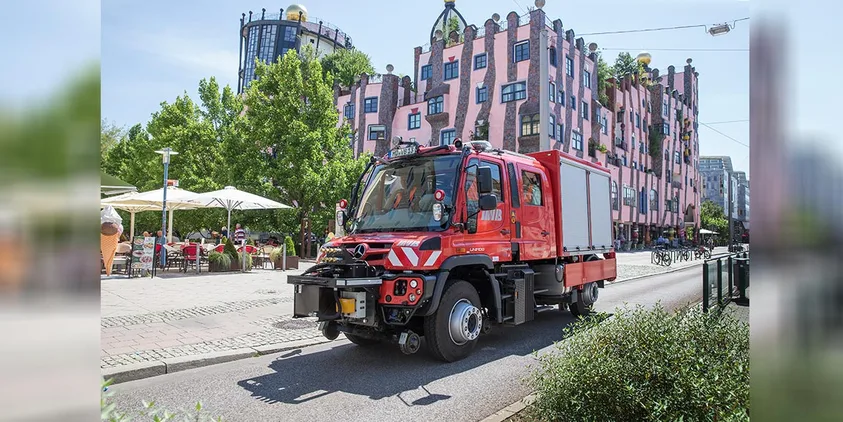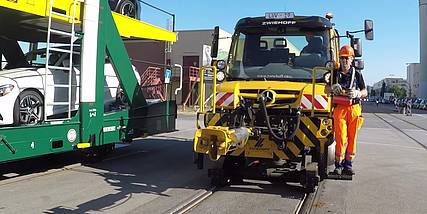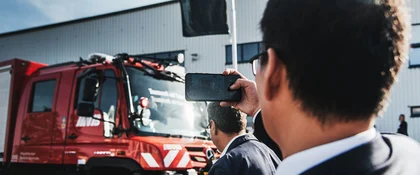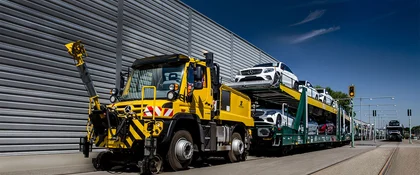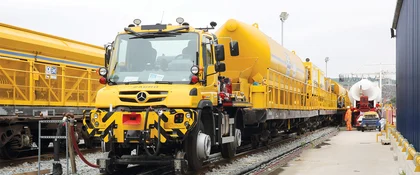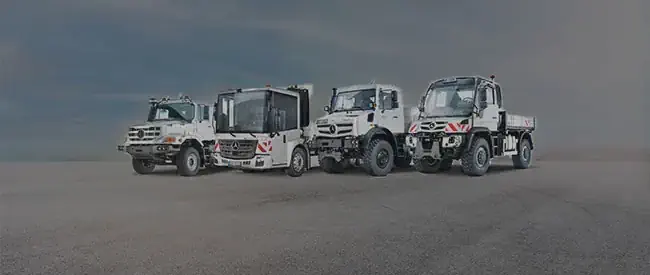New Unimog for lightning-fast service and rescue operations in Magdeburg.
The flexibility of the Unimog is legendary. Examples of this are the road-rail vehicles that can switch from road to rail in less than three minutes. The Magdeburg public transport corporation (MVB) recently put such an all-rounder into service - a unique multifunctional vehicle to which numerous specialist companies contributed.
The journey begins at the world's largest truck plant.
When the new Unimog U 423 for the MVB rolled off the assembly line in Wörth, it looked just like a “normal” Unimog. From there, it embarked on a journey which was to take it through a series of specialist processors, until it ultimately no longer looked like a conventional Unimog at all. What has been in service with the MVB in Magdeburg since May of this year is a quite extraordinary Unimog. Equally suitable for road and rail, it provides lightning-fast emergency and service call-outs for any number of “single-mode vehicles”. Because the Magdeburg fleet includes 87 trams, 13 work trucks, as well as three workshops for rail vehicles and more than 130 kilometres of rail network.
Top-class technology that delivers extreme flexibility.
Bernd Eberhard, project manager for tram and vehicle projects at MVB, played a key role in the procurement of the new vehicle. Describing the requirements, he comments: “We ordered the Unimog because we need a vehicle that can be deployed extremely quickly in critical situations, such as a tram breakdown, and can be on the track at the site within just a few minutes.” “So we needed a perfectly equipped replacement for the predecessor - also a Unimog road-railer, built in 1992.”
Bernd Eberhard's equipment wish list was correspondingly extensive: It had to be a Unimog featuring very special rail guiding technology, a large crew cabin, and lots of storage space for recovery tools. The desired package was implemented with the help of three specialist companies. The first stop was the assembly line at F&B Nutzfahrzeug Technik in Hagenbach.
There, the wheelbase was extended to 4500 millimetres, and a number of chassis components were relocated to make room for the planned double cab mounting and for the box body. Then the Unimog was sent to body specialist Kronenburg at Wanroij in the Netherlands. That was where the aforementioned double cab was installed, providing space for the crew, as well as for the special onboard electronics which the Unimog needs when switching from road to rail.
The Unimog can be placed almost anywhere on the track.
Bernd Eberhard, Project Manager Tram and Vehicle Projects, Magdeburg public transport corporation (MVB)
Finally, it was turned into a fully-fledged rail vehicle by the road-rail vehicle experts at ZAGRO in Bad Rappenau. The bogey type rail guiding system - the basis for operation on rails - were mounted on the axles. The total of eight rail wheels keep the vehicle safely on the track, while the Unimog's standard production tyres provide propulsion directly on the rails. The special swivelling bogey rail guide system was required because MVB's tram network features very tight bend radii of around 18 metres.
When called upon, the Unimog drives on the road to get as close as possible to the incident - if necessary also with flashing blue lights, at speeds of up to 90 km/h. On the rails, a speed of up to 50 km/h is technically possible, but the vehicle runs more slowly when pulling a tram.
